Undersea Attractions: Underwater Sculpture Parks in Grenada and Mexico
I have strolled through many museums, admiring artwork and sculptures from renowned artists, but my visit to an underwater museum, outfitted in SCUBA gear, was a first for me. Last July, my husband and I visited Grenada’s Underwater Sculpture Park during our stay at the all-inclusive, Sandals LaSource Grenada and found it to be a highlight of our week’s dives.
Located a short boat ride away from the resort in Molinere Bay, the undersea sculpture gallery was opened to the public in May 2006 and will soon mark its 10th anniversary. The world’s first such underwater art installation is now listed as one of the Top 25 Wonders of the World by National Geographic.
Jason deCaires Taylor, the creator of this unique, inspiring and ever-changing exhibition, is not only a prolific sculptor, but an award-winning underwater photographer, naturalist and dive instructor.
Life-size statues were cast from a special type of cement that encourages reef growth, so algae, coral and sponges begin to cover the sculptures and become part of the living reef. The sculptures — 65 in the beginning stages, and now numbering around 100 — were attached to the ocean floor at shallow depths ranging from five to 30 feet and spread throughout a half mile of protected marine area, making it possible for snorkelers and glass bottom boat passengers to view them, as well as scuba divers who are able to swim among them.
One of the most interesting aspects of the underwater gallery is that real-life models were used for the sculptures involving people, such as the circle of children holding hands called “Vicissitudes,” meaning: the quality or state of being changeable.
“The Lost Correspondent” sculpture was the beginning of it all — the first to be sunk and attached to the sea floor. It shows a man sitting at his desk…“his hands hovering over the typewriter, poised in eternal deliberation. He is a forgotten relic, like his typewriter—an antique, superseded by modern technology.” This really spoke to me as a writer since I began my career working on an IBM Selectric typewriter, now also a relic.
A “Christ of the Deep” sculpture was added in 2011. It s a replica of the Christ of the Deep statue which stands on the Carenage in Grenada’s capital, St. Georges. “The Nutmeg Princess,” an 11-foot tall sculpture inspired by the 1992 book, The Nutmeg Princess, by Grenadian author/playwright Richardo Keens-Douglas, became the underwater park’s most recent addition in 2015. It depicts a fairy tale princess emerging from a large nutmeg pod, reaching to the heavens with a handful of Grenada’s most famed spice, the nutmeg.
Slideshow of more photos taken on our dive:
Substantial reef damage caused by Hurricanes Ivan and Emily in 2004 and 2005 was one reason the project was undertaken by Taylor, along with the fact that 40% of our natural coral reefs have been lost in the past several decades.
On his website, www.underwatersculpture.com, Taylor says his works are designed “to promote the regeneration of marine life and to use sculpture as a means of conveying hope and awareness of the plight of our oceans.”
More information about Grenada’s Underwater Sculpture Park can be found on the website of the Grenada Underwater Sculpture Management Inc (GUSMI), a non-profit volunteer based group who, with the endorsement of the Grenada Board of Tourism and Fisheries Department, is working to rejuvenate and develop the sculptures in Grenada’s Underwater Sculpture Park. The group has a Facebook page, Grenada Underwater Sculpture, as does Jason deCaires Taylor.
A marine park entrance fee is charged to divers ($2 USD/day or $10 USD annually); snorkelers and boat riders pay $1 USD per day.
Project #2: Cancun’s Underwater Sculpture Museum
The Grenada Underwater Sculpture Park was Jason deCaires Taylor’s first project but it is by no means his last. An underwater museum, MUSA (Museo Subacuático de Arte) — the Cancun Underwater Sculpture Museum — was opened in 2010 in the waters surrounding Cancun, Isla Mujeres and Punta Nizuc, Mexico.
I was privileged to be able to visit it last August (2015), less than a month after scuba diving among the sculptures in Grenada. Due to its size, there is no way it can all be seen in one dive. I would love to go back and do another dive to see more of the sculptures.
The Cancun Underwater Sculpture Museum consists of nearly 500 permanent life-size sculptures and is one of the largest and most ambitious underwater artificial art attractions in the world. Most of the models were fishermen and others living in the nearby village of Puerto Morelos. Other artists have also contributed to the project, which involved collaboration between Taylor, the Cancun and Isla Mujeres’ Nautical Associations, and other private sector supporters. The layout is divided into two galleries, one suitable for both divers and snorkelers and a shallower one for snorkelers only.
“The Silent Evolution” (2012), Taylor’s most ambitious work here, consists of 500 sculptures of real-life casts of individuals.
“The Anthropocene” is a full-size replica of a Volkswagen Beetle. It was designed to give lobsters and other crustaceans a place to hide.
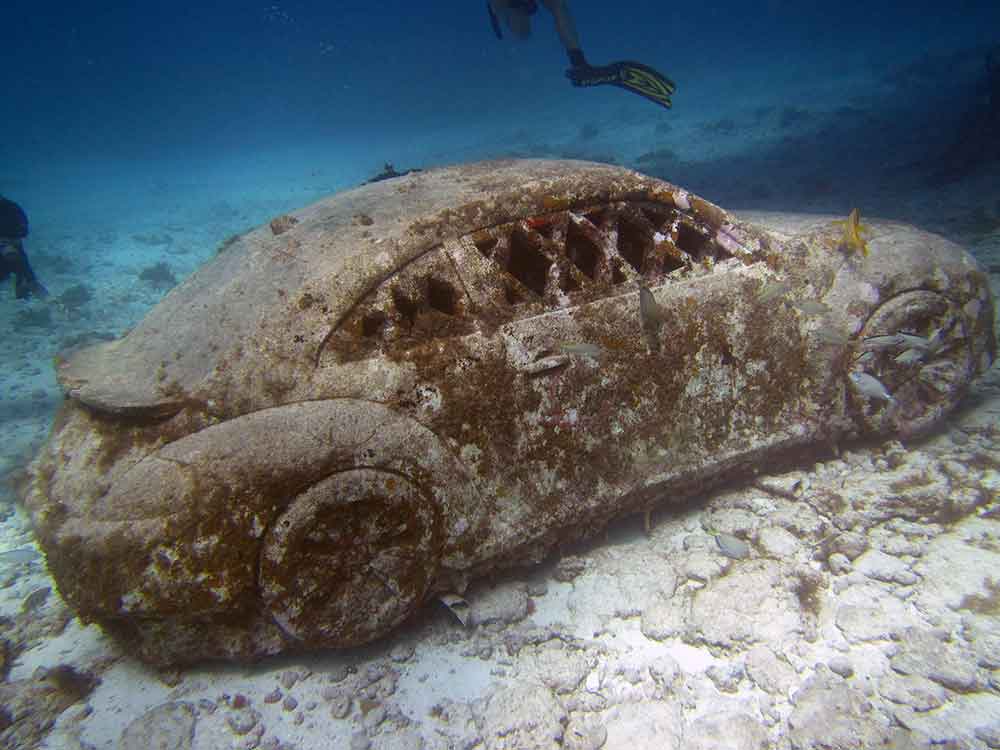
“The Anthropocene,” a full-size replica of a Volkswagen Beetle. Were there lobsters inside? (Photo: Debbra Dunning Brouillette)
“The Banker” (below, one of several spread across this stretch of sand) depicts a banker with his head in the sand, reminiscent of the recent world-wide recession and economic collapse.
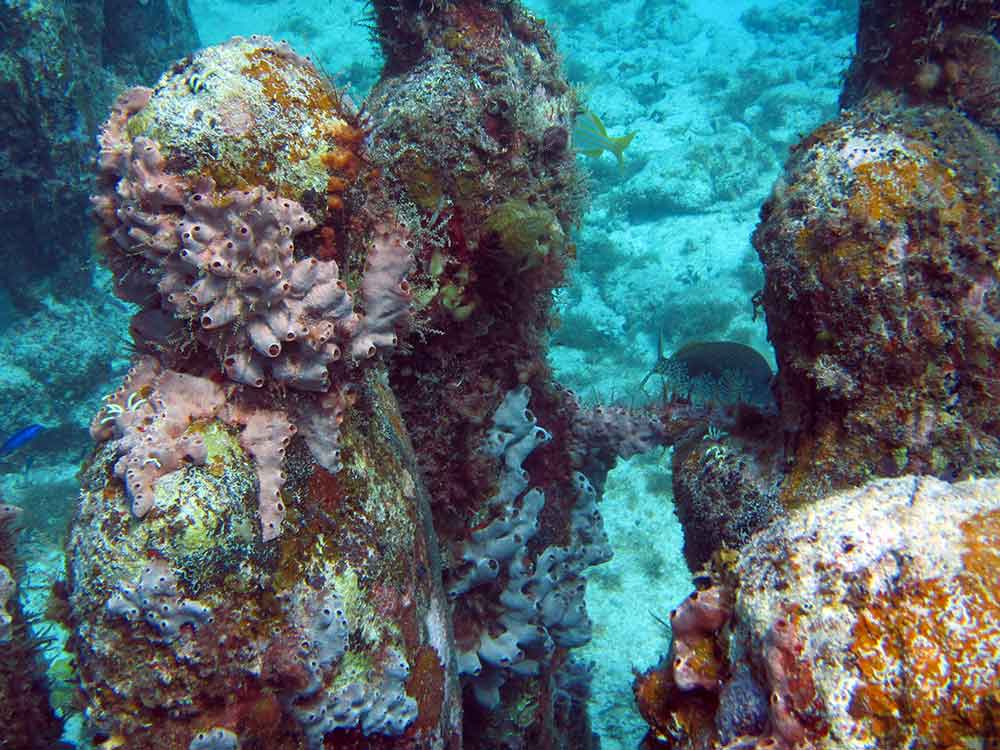
Sponges and coral attach to the sculptures, covering the the statues in unpredictable ways. (Photo: Debbra Dunning Brouillette)
Visiting an art gallery underwater is a totally different experience. As Taylor says, “Taking art off of the white walls of a gallery offers the viewer a sense of discovery and participation.”
Slideshow of more photos from our dive:
If your travels take you to Grenada or Cancun, don’t miss the opportunity to visit one of these amazing underwater attractions.
Other projects in the works:
Jason deCaires Taylor is currently working on a third underwater sculpture park in Lanzarote, Canary Islands, which will be Europe’s first subaquatic museum. Visitors are permitted to view the first set of sculptures that have already been submerged. A completion date of summer 2017 is anticipated.
He has also made an impact in the Bahamas with Ocean Atlas, the world’s largest underwater sculpture. Installed under the sea off the coast of New Providence, it is a 60-ton, 18-foot-tall statue of a young Bahamian girl who appears to be holding up the ocean, much like the mythological Titan Atlas shouldered the burden of the heavens.
Commissioned by the Bahamas Reef Environment Educational Foundation, Ocean Atlas is the first of a series of works that are planned for an underwater sculpture garden that will be known as the Sir Nicholas Nuttall Coral Reef Sculpture Garden after the organization’s founder.
Watch the TED talk video below to hear Jason deCaires Taylor talk about his work and the vision he has for the future. I am inspired by him and think you will be, too!
https://youtu.be/L099ZkfCiOQ


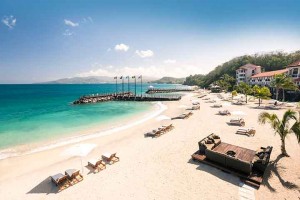
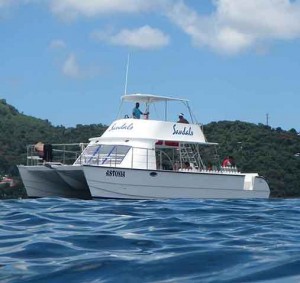
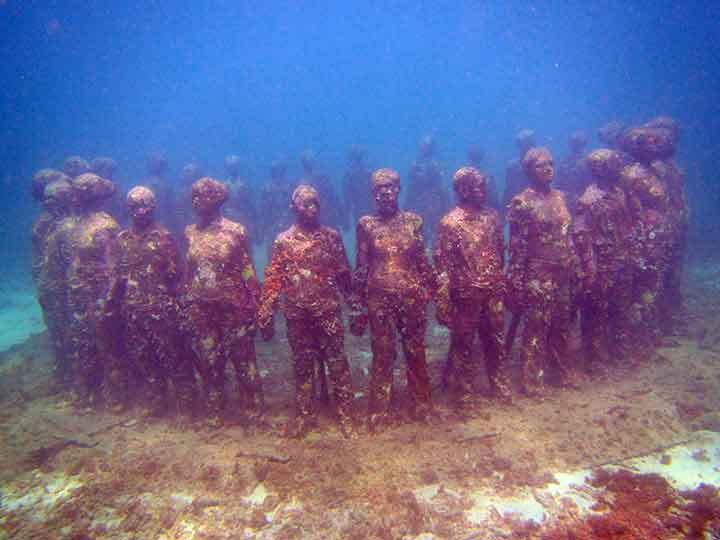
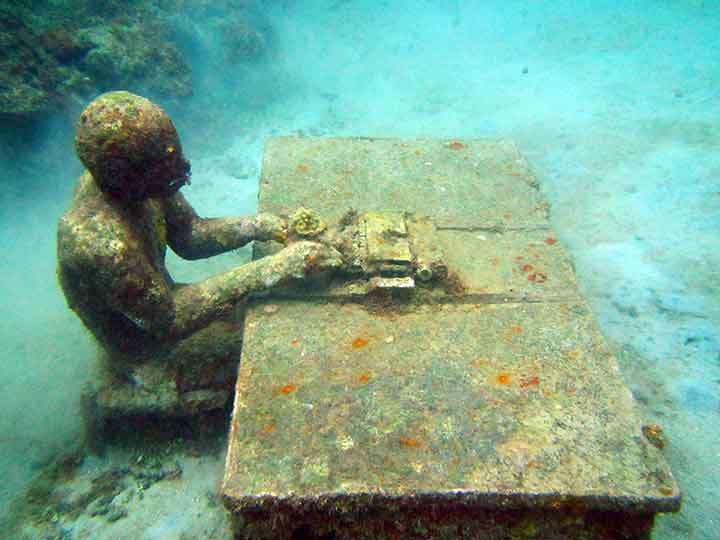
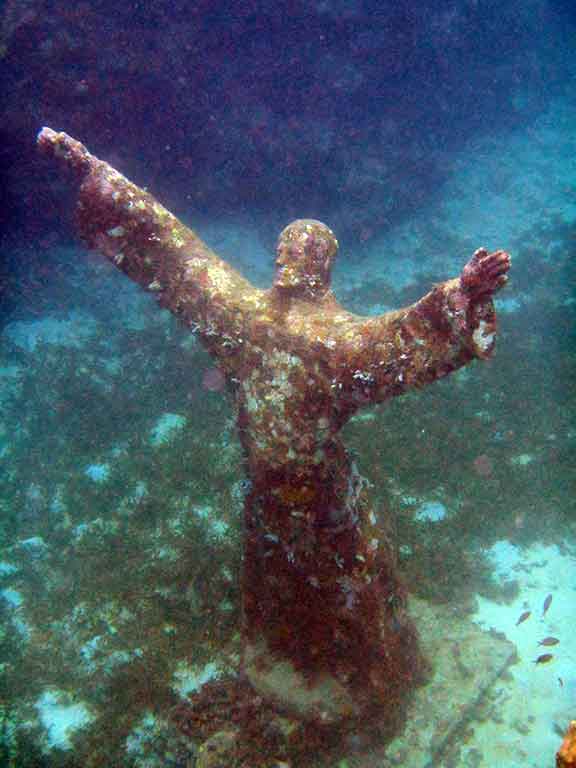
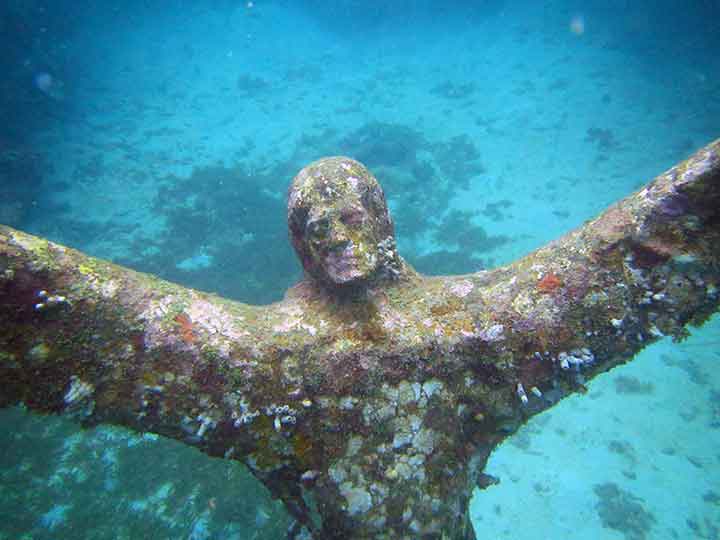
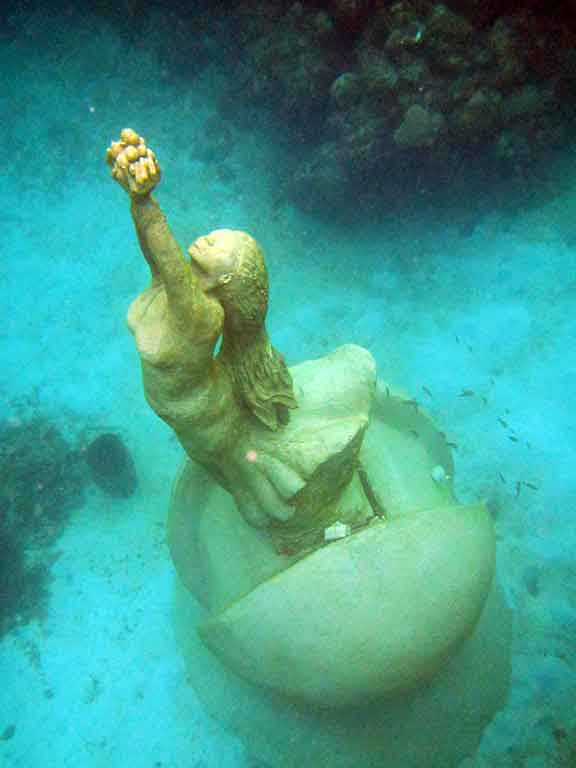
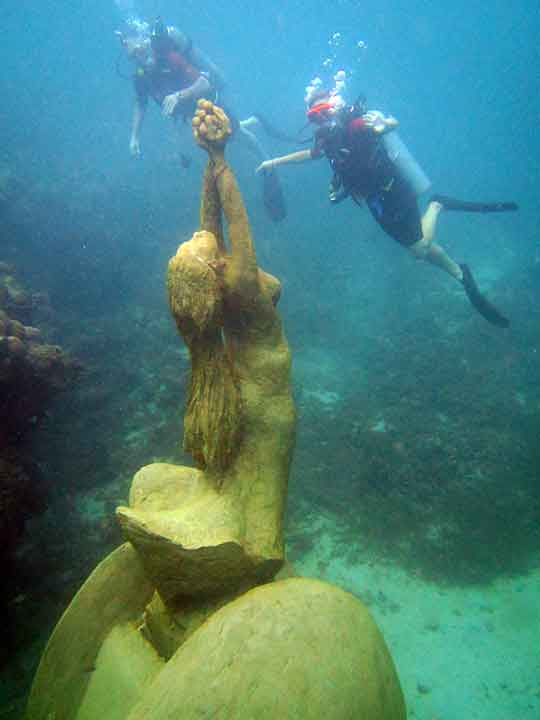
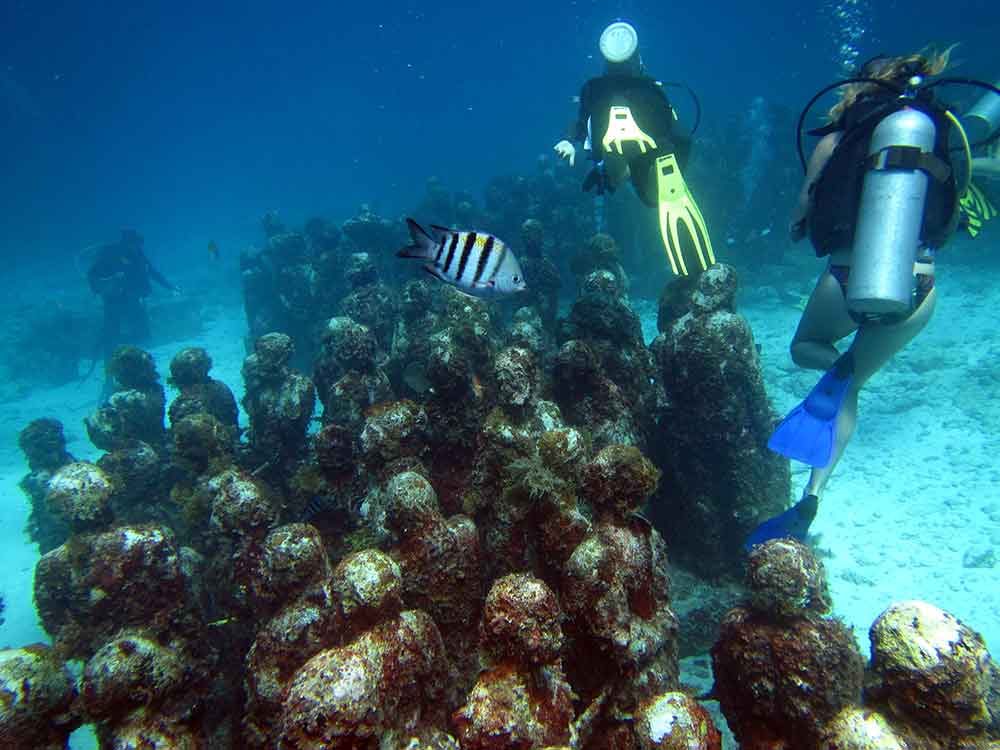
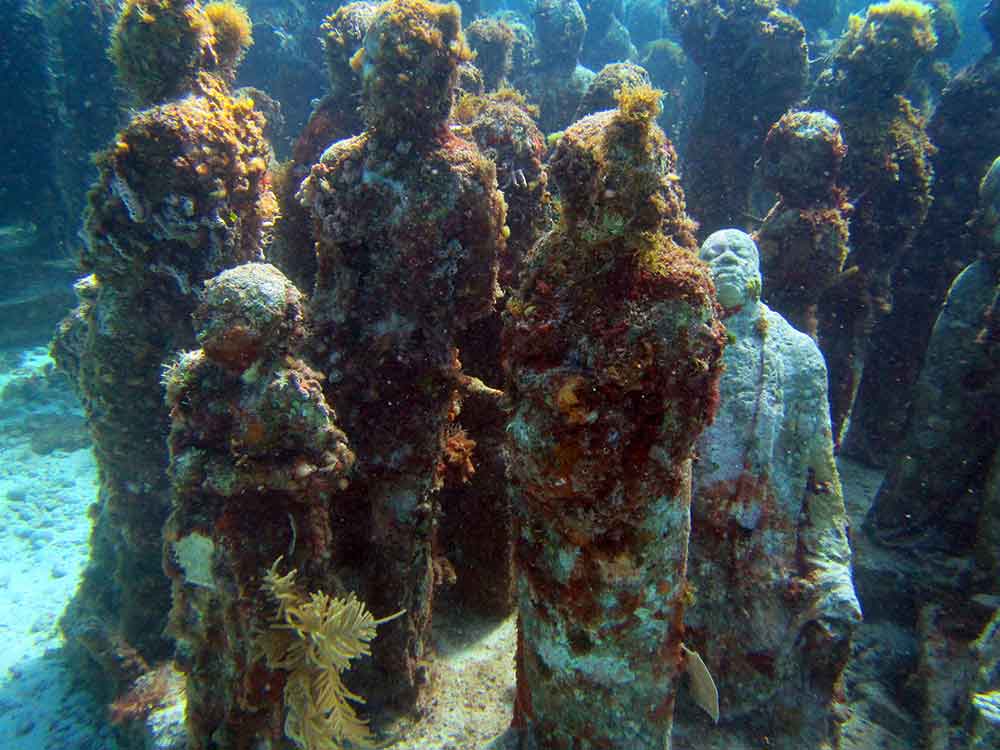
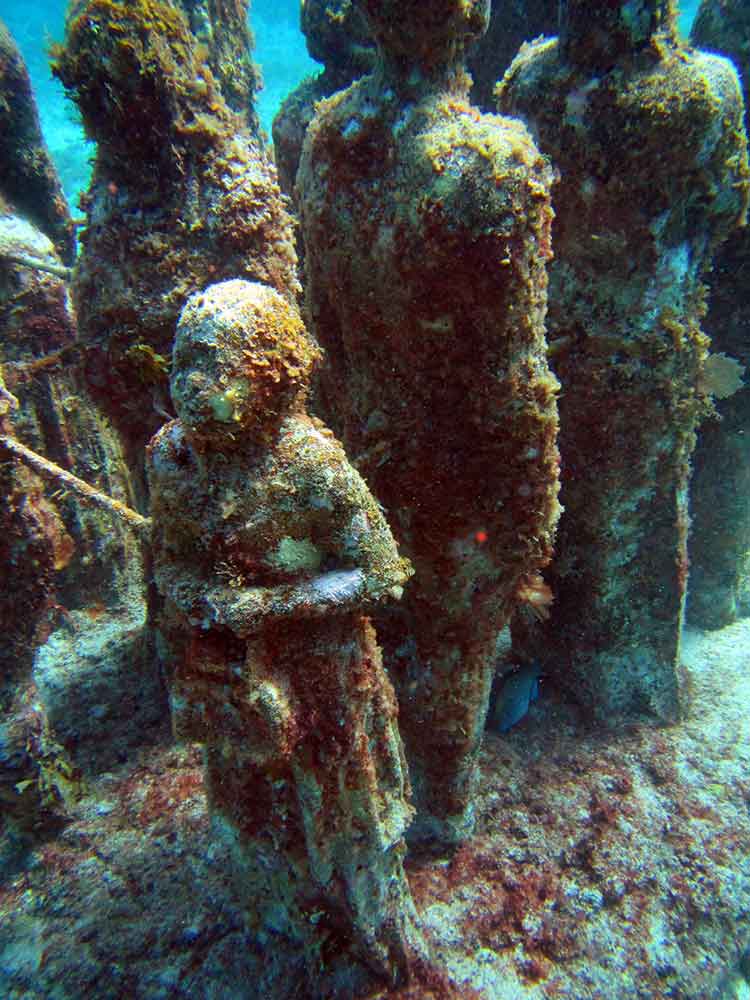
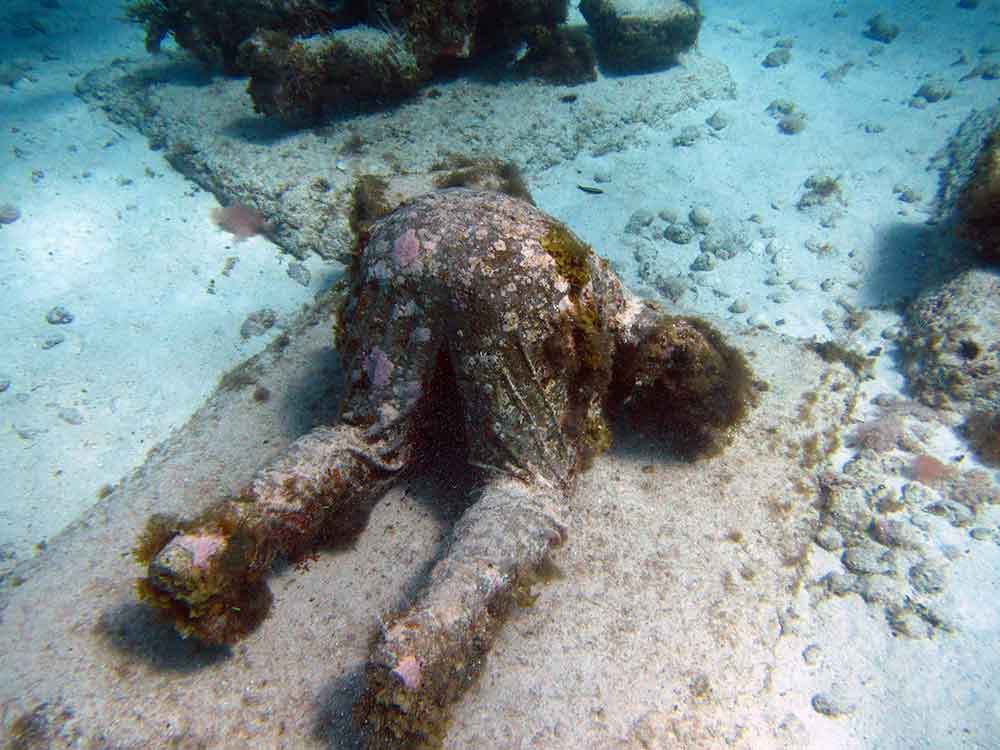
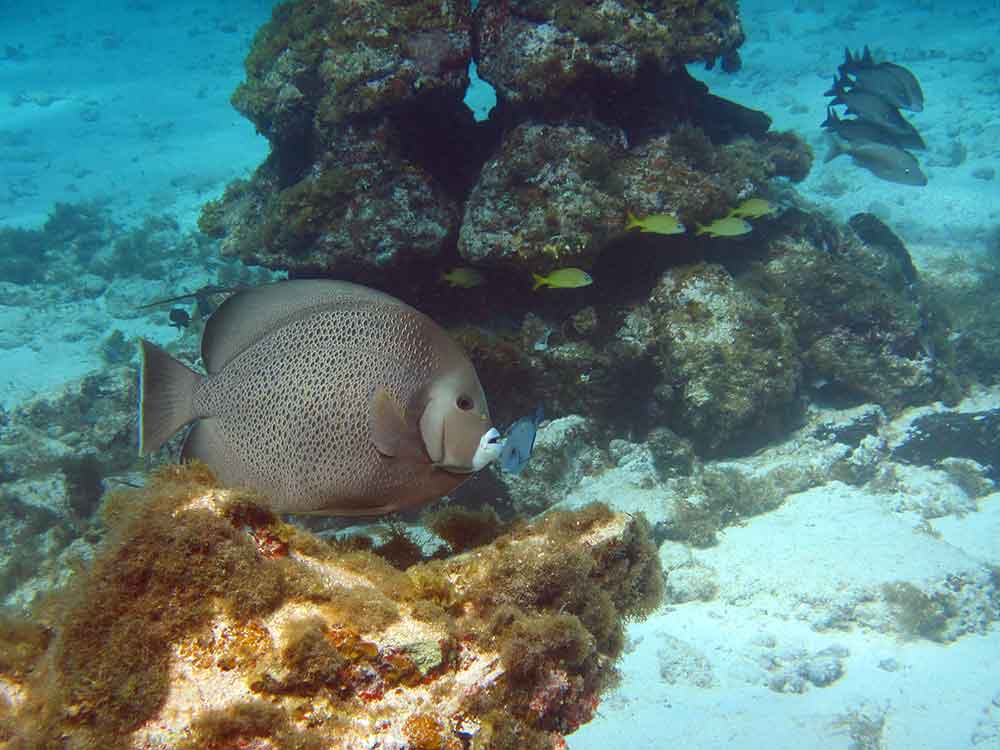
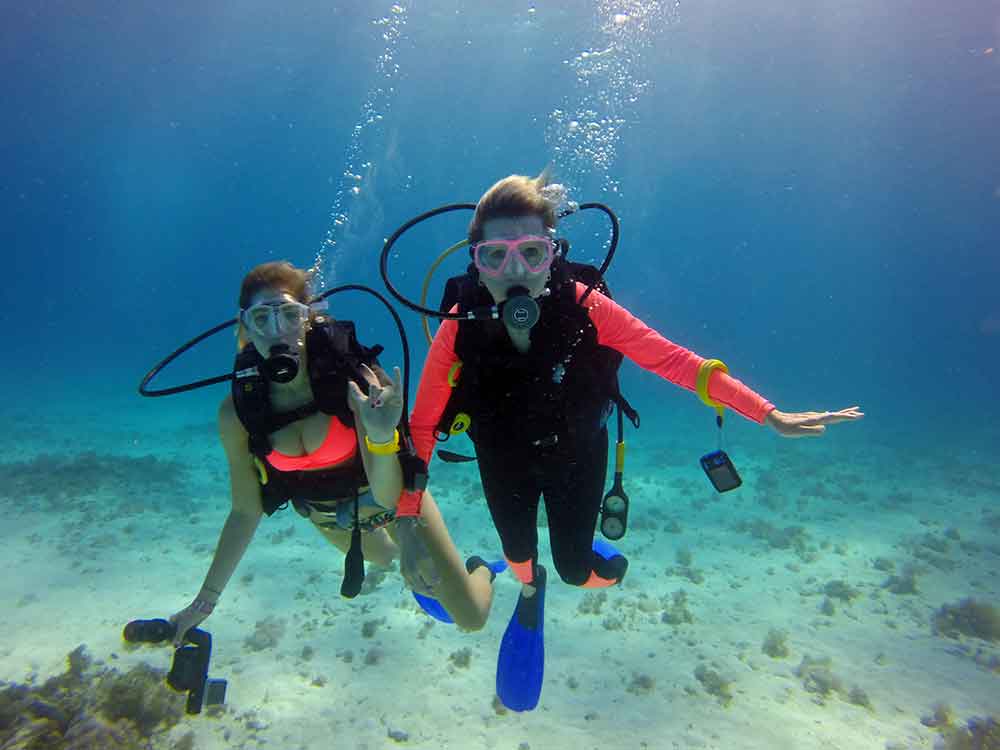
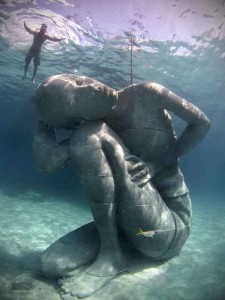
This is amazing post, Debbie. Thx so much for including the video of the creator speaking about his work, how it’s changing, and how it’s helping the environment. I hope to see the one in Grenada in May when I go for the Chocolate Festival assuming we can squeeze it into my tight schedule.
Doreen, you MUST find a way to fit it into your time in Grenada when you’re there for the Chocolate Festival! You’ll really be glad you did. Even if viewing from above as a snorkeler, you’ll be able to see a lot. And yes, Jason deCaires Taylor is amazing, isn’t he? I am so impressed by him and his accomplishments to date on behalf of our coral reefs!
Fabulous photos!
Bruce and Carole
Thanks, Bruce and Carole! These underwater parks were fascinating places for photo opportunities. Good to hear from you; hope all is well. Ready to go back to the Galapagos?
Totally fascinating and a bit eerie. I’d love to see these art installations, but by glass-bottomed boat, perhaps. Not a diver, but it must have been awesome to see them that way.
Yes, Cathy, both of these underwater parks are worth a visit. As a diver, they were the most unusual dives I’ve done. Being able to swim among the sculptures and photograph them was quite a treat.
What a fun way to explore this art themed dive. I love how the coral is starting to come back to the area through this innovative program. Excellent post and imagery and thanks for taking us there Debbra
Fun and so unique, Noel! Artificial reef projects like this are helping regenerate damaged reefs and hopefully bringing awareness to their loss worldwide.
Thanks for a great post, love the photos! Interesting additions to the reefs. Love the banker and VW.
I loved them, too! The VW looked so real…like an actual car had been sunk. I hope it does provide a home for crustaceans (lobster, sea urchins, etc.).
What fantastic photography! What kind of camera did you use?
Thank you! I use a Canon Powershot D-30, which is waterproof to 82 feet with no external housing needed. It’s a great all-around compact camera.
I’ve never heard of underwater sculpture parks before, so this was absolutely fascinating for me, and a little bit eerie, which is good, because your pictures moved me to feel something. I too particularly loved the Lost Correspondent” sculpture of a man sitting at his desk…with a forgotten relic, his typewriter—an antique, superseded by modern technology. I also began my career on an IBM typewriter, so I felt the tug of this photo quite strongly. I’d even do a dive course to see something like this – and I’m not a keen diver!
Thanks so much, Johanna, for your comments! You can see them from the top of the water by snorkeling, although divers have the very best views. They are in shallow water, from 5-30 feet, so it is also a great beginner dive for those taking a resort dive course.
What top quality photos of these fantastic underwater sculptures. That Canon Powershot D-30 looks like a great camera. I especially love the shot of the Nutmeg Princess
Yes, it is; I highly recommend it! I had the earlier models, too, which were rated to 33 feet, but this one can amazingly go to over twice that depth! Its zoom, up to 20x, is pretty amazing, too. Topside shots often compare favorably to ones taken with my DSLRs.
Wow Debbra! You’ve done an amazing job capturing the beautiful underwater sculptures. I really appreciated the additional slide show and video by Mr. Taylor. I’m not a diver but I might be enticed after seeing all there is to see. Thanks!
The underwater world in general is so amazing, Sue, that I encourage anyone with interest to become a certified diver. Even if you get a chance to snorkel above them, do it! Thanks for stopping by…
This underwater park looks so incredible. I am terrified to scuba, but it just might be time to take a step out of my comfort zone. Nothing like a beautiful post like this to show me how much I am missing.
I was apprehensive about learning to scuba dive, too, Alison, in the beginning, but I took it step by step and now feel it’s one of the best things I have ever done. I’ve been certified to dive since 1992 and my life has been enriched in many ways through my exploration of the underwater world. Take that step out of your comfort zone and give it a try!
What a fascinating museum, Debbra. I’ve never heard of it, but neither did my husband who is a scuba diver. These statues are so expressive, so unique! I understand they have been made from a material that allows plants and coral to grow on them, but if that happens they soon will be unrecognizable, won’t they?
I don’t think they will be totally unrecognizable, Anda, but as you can see, some of them already have sponges and coral growing on them that make them look quite different and, in some cases, a bit eerie. It will be interesting to see them in another 5-10 years, to see how they have changed. I’d love to go back and dive among them again.
Pingback: why I love Grenada - Chocolatour with Doreen Pendgracs | Chocolate Adventurist and Wizard of Words